Did you know that over 40% of motorcycle accidents involving custom models are linked to improper wheel customizations? Customizing your motorcycle may reflect your style, but a single misstep can jeopardize everything from ride quality to your safety. Whether you’re enhancing a Harley Davidson’s presence with chrome moto wheels or rebuilding a sport bike for performance, understanding the risks and complexities of motorcycle wheel customizations is crucial to avoid costly mistakes and safety hazards. Dive in to uncover the most overlooked dangers, enjoy pro tips from industry leaders, and ride confidently—knowing you’re prioritizing both aesthetics and on-road security.
The Hidden Risks: Why Avoiding Mistakes in Motorcycle Wheel Customizations Matters
When you dive into motorcycle wheel customizations , the allure is undeniable: polished chrome, lightweight alloy rims, and custom spoke patterns that set your build apart. However, beneath this excitement lies serious risk. Poorly executed customizations can lead to unpredictable handling, uneven tire wear, or even catastrophic failures—making simple mistakes not only a blow to your investment but a potential safety hazard.
According to recent statistics, improper installation or misalignment accounts for a substantial portion of accidents on custom motorcycles. Often, enthusiasts overlook critical aspects like balancing, correct sizing, and professional consultation at a quality motorcycle shop . Even details such as using proper tools or selecting compatible custom parts can dramatically affect performance. The impact on your ride isn’t just cosmetic—errors can compromise braking, stability, and the longevity of vital motorcycle parts.
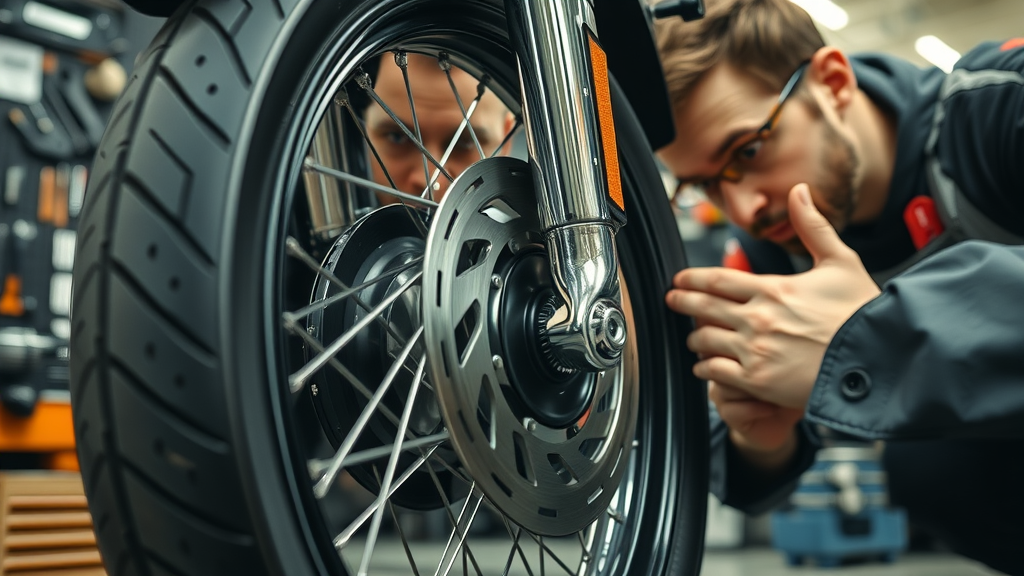
-
Startling Statistic: Over 40% of motorcycle accidents involving custom models are linked to improper wheel customizations. Unveil the most overlooked dangers when customizing your motorcycle wheel and how mistakes in motorcycle wheel customizations can put both ride quality and safety at risk.
What You Will Gain by Understanding Mistakes in Motorcycle Wheel Customizations
Becoming aware of common mistakes in motorcycle wheel customizations puts you miles ahead of the pack—not just in terms of style but in overall safety and satisfaction. This guide arms you with the ability to spot and avoid pitfalls, empowering you to make each wheel modification count. You’ll move forward with comprehensive knowledge on proper installation, selecting and balancing wheels, and working effectively with professional motorcycle shops.
Knowing how to distinguish between quality custom parts and questionable aftermarket components ensures longevity and optimal performance. By learning from the mistakes others often make, you decrease the risk of expensive repairs or dangerous incidents. Whether you’re customizing your motorcycle for the first time or refining a custom build, these insights will save you both money and peace of mind.
-
How to identify and prevent the most common mistakes in motorcycle wheel customizations
-
In-depth knowledge of proper motorcycle wheel installation and balancing
-
Insights on choosing the best motorcycle wheels and modifications for your needs
-
Pro tips for working with a motorcycle shop or customizing your motorcycle safely
Common Mistakes in Motorcycle Wheel Customizations: Critical Errors to Avoid
Customizing your motorcycle wheels is a thrilling process, but some missteps can undermine the entire project. Among the leading errors are mismatching components, overlooking essential torque specs, and neglecting the need for rebalancing after a major modification. Skipping professional inspections from a reputable motorcycle shop and ignoring manufacturer guidelines can escalate these issues, turning a custom build into a liability.
To achieve both an eye-catching and high-performing ride, it’s vital to pay attention to every stage—starting from component selection and extending through installation and ongoing maintenance. Overlooking these steps could diminish the effect of even the best chrome moto wheels or high-grade custom parts. Remember, each modification interacts with the entire system , and a small mistake may have far-reaching effects on handling, comfort, and safety.
Misaligning the Motorcycle Wheel: Effects on Handling and Wear
One of the most common mistakes in wheel customizations is improper wheel alignment. A misaligned motorcycle wheel can have a dramatic impact on handling—your bike may pull to one side, feel unstable during acceleration, or exhibit uneven tire wear over time. These symptoms don’t just affect ride comfort; they create pronounced safety hazards, especially at high speeds or while braking.
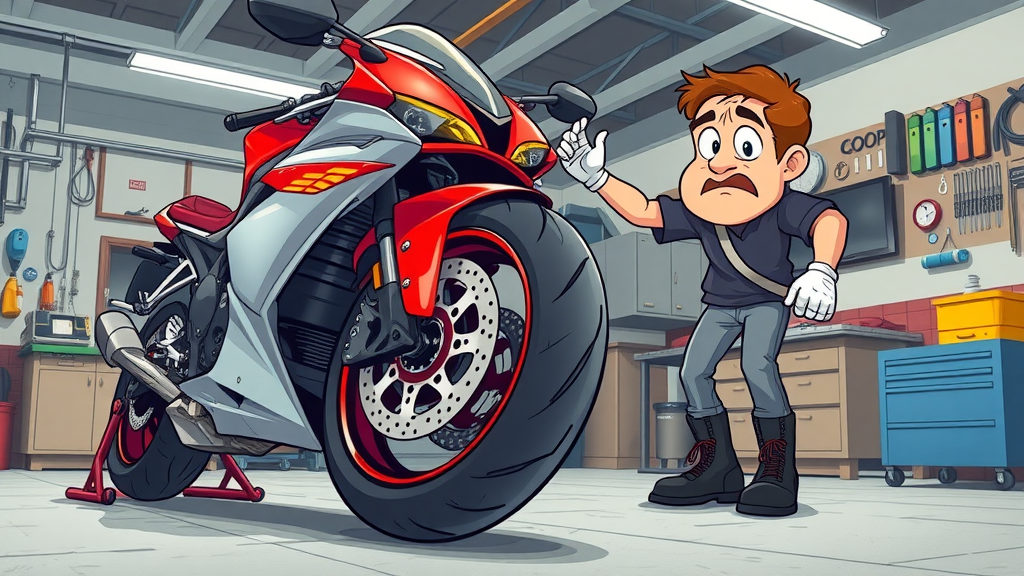
Mismatched alignment also puts undue stress on vital motorcycle parts such as the chain, sprocket, and brake pads. Over time, this can accelerate wear, cause irregular noise, and ultimately require more frequent and costly repairs. For those incorporating advanced custom builds—including chrome motorcycle rims or larger aftermarket wheels—precise alignment is even more critical, as small errors are magnified by the increased complexity and performance demands.
To avoid these issues, always use proper tools and follow strict alignment protocols. If unsure, consult with a qualified technician at a reputable motorcycle shop to assess your work and catch any problems before they escalate into riding hazards.
Improper Wheel Bearing Installation and Maintenance
Another easily overlooked yet critical factor is wheel bearing installation and ongoing maintenance. Using the wrong wheel bearings , incorrect press-fitting techniques, or insufficient lubrication can lead to rapid bearing failure. Malfunctioning bearings may produce vibrations, increase rolling resistance, and in extreme cases cause the wheel to lock or detach—creating dire safety risks and potential for severe crash scenarios.
Professional shops use specialized tools to ensure proper installation of wheel bearings—ensuring not just fitment but also longevity. Regular inspections and a clear maintenance schedule are essential for custom builds, particularly when heavy or high-performance motorcycle wheels are used. Always check for signs of excessive play, rough rotation, or abnormal noises and address them promptly.
When customizing your motorcycle, never cut corners with critical components like wheel bearings. Using OEM or high-quality aftermarket parts and following precise maintenance recommendations can avoid countless issues later, keeping both you and your ride safe on the road.
Overlooking Balance and Tire Choice When Customizing Motorcycle Wheels
Wheel balance and tire selection go hand-in-hand with performance and safety in any motorcycle modification . Failing to properly balance your new wheels can cause persistent vibrations, which not only diminish ride comfort but also reduce the lifespan of your motorcycle parts and create dangerous conditions at higher speeds. Even the best custom chrome motorcycle wheels require expert balancing after installation or tire changes.
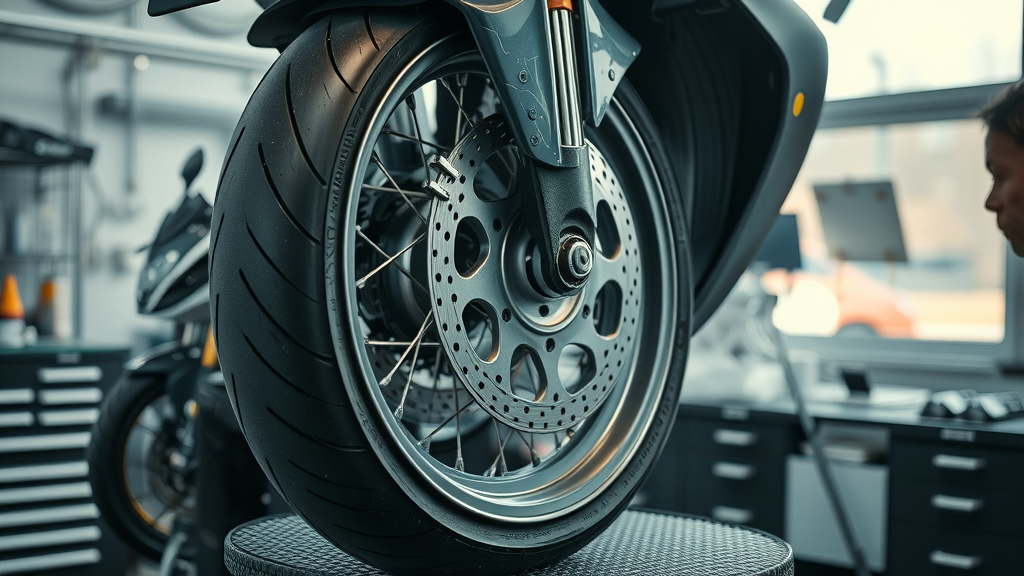
Tire choice is just as crucial. Using the wrong tire profile or a poor-quality product impedes grip, increases braking distance, and undermines the handling benefits of your chosen wheels. A mismatched set of tires and wheels can also invalidate warranties or create complications during insurance claims in case of accidents.
For optimal results, always pair wheel upgrades with tires recommended for your specific bike and intended riding style. Invest in professional balancing at trusted motorcycle shops and never underestimate the combined impact of these “small” decisions on the overall performance and safety of your custom motorcycle.
Incorrect Sizing When Selecting Custom Motorcycle Wheels or Rims
Selecting the correct size for custom motorcycle wheels or rims is not just a matter of aesthetics—it’s fundamental to both performance and safety. Choosing wheels that are too large or incompatible with your bike’s frame can affect the handling, limit suspension travel, and place excess stress on the swingarm and forks.
In some cases, the desire for dramatic custom builds with fat rear tires or oversized chrome moto rims leads to clearance issues, speedometer inaccuracy, or even interference with the brake pads and exhaust pipes. Sizing mistakes can result in discomfort during longer rides, unnecessary tire wear, and the possibility of failing a safety inspection or voiding your insurance.
To avoid these common mistakes , always verify wheel compatibility in your owner’s manual and consult with industry professionals—don’t rely solely on online advice or manufacturer claims for aftermarket parts.
Skipping Professional Inspection or Consultation at a Motorcycle Shop
Pursuing a DIY approach can be satisfying, but skipping professional inspection or expert consultation raises the risk of undetected mistakes in motorcycle wheel customizations. Experienced mechanics at a reputable motorcycle shop have the knowledge and diagnostic equipment necessary to assess alignment, torque, and component fitment accurately.
Frequent errors like failing to torque bolts to specification, mismatching custom parts (such as rc components or chrome motorcycle wheels), and not rebalancing after modifications can escape even the diligent home mechanic. These lapses might only become evident during high-speed riding or emergency braking—not the time you want to discover a flaw.
-
Mismatched components (custom exhaust, lighting system, etc.)
-
Ignoring torque specs on wheel nuts or custom parts
-
Failing to rebalance your motorcycle wheel after modifications
-
Improper installation of brake pads following wheel or rim upgrades
|
|
|
Outcomes: Proper vs. Improper Motorcycle Wheel Installation |
|
Aspect |
Proper Installation |
Improper Installation |
|---|---|---|
|
Handling & Safety |
Smooth, predictable ride; responsive braking; stable at speed |
Unstable handling; increased risk of loss of control or accidents |
|
Tire Wear |
Uniform wear, long tire lifespan |
Irregular wear, frequent tire replacements, compromised grip |
|
Custom Part Compatibility |
No interference; seamless fitment of exhaust systems, brake pads |
Interference, noise, accelerated wear on adjoining motorcycle parts |
|
Long-Term Reliability |
Consistent performance, minimal unexpected repairs |
Chronic issues, higher repair costs, potential safety hazard |
Choosing the Right Motorcycle Wheels: Key Factors in Custom Motorcycle Modifications
Selecting the best motorcycle wheels and rims is pivotal for both personalization and function. Whether considering forged alloy wheels for a sport bike or chrome moto wheels for a Harley Davidson, each option offers unique benefits but also has critical fitting requirements. Focus on the practicalities first: weight, durability, heat dissipation, and compatibility with existing custom parts and exhaust pipes.
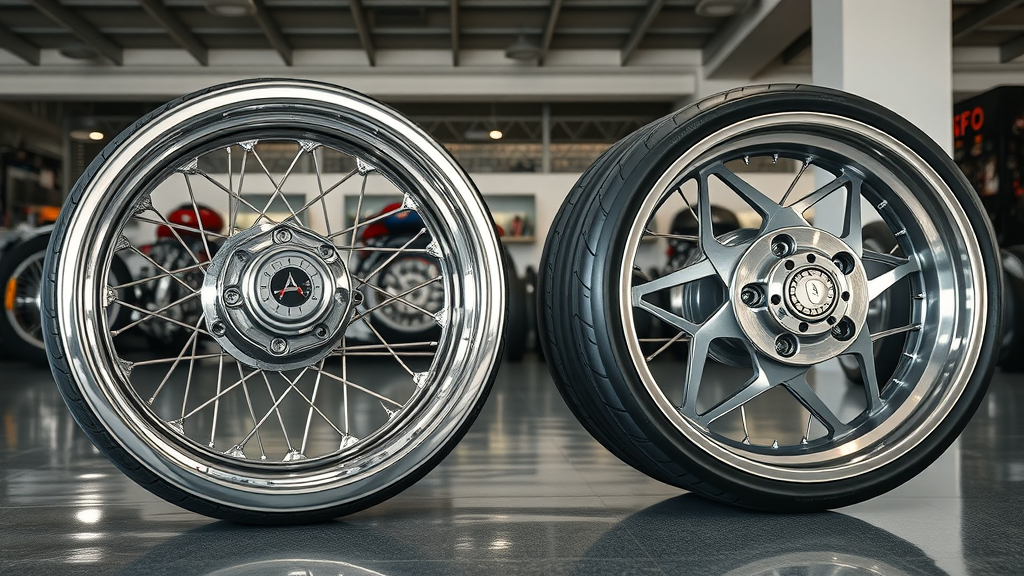
Your custom build should enhance performance without sacrificing stability, braking, or overall safety. The choice between steel, alloy, and chrome finishes impacts ride quality, maintenance demands, and aesthetic appeal. Balance these priorities and remember that even the most visually stunning custom wheel is only as good as its proper installation and suitability for your bike’s intended use.
Material Choices: Alloy vs. Steel, and Chrome Motorcycle Options
Material selection is often the first decision in a custom motorcycle wheel upgrade. Alloy wheels are prized for being lightweight and excellent at dissipating heat—making them a top pick for racing and high-performance builds. However, they can be less forgiving under impact compared to steel. Steel wheels, on the other hand, offer robust durability and are ideal for heavy-duty applications or riders prioritizing toughness over minimal weight.
For the ultimate blend of style and resilience , chrome motorcycle wheels bring unmatched aesthetics and corrosion resistance but require diligent maintenance. The process of chroming also adds cost and complexity to the customization process. Assess your priorities—whether superior agility, longevity, or show quality—and verify that your selection aligns with the demands of your specific custom motorcycle and riding habits.
Spoke Wheels vs. Cast Wheels: Pros, Cons, and Customization Pitfalls
The debate between spoke wheels and cast wheels is alive and well in any motorcycle shop. Spoke wheels are favored for their flexibility and ease of repair and are a hallmark of classic custom motorcycles or off-road builds. However, they require regular tensioning and can lose stability over time if not maintained properly, especially after heavy modifications or the addition of custom parts like custom exhaust systems.
Cast wheels, typically found on sport and performance bikes, provide rigidity, precision, and low required maintenance. Their key advantage lies in supporting custom builds with high-horsepower engines and advanced exhaust systems. However, they can be costlier to repair or replace after major impacts. Always account for the impact on overall performance, safety, and ease of upkeep when choosing between these two main types.
“The best motorcycle modification is the one that enhances both performance and safety, not just appearance.” – Leading Custom Motorcycle Mechanic
Chrome Moto Finishes: Benefits and Maintenance Considerations
Chrome moto finishes elevate any custom motorcycle, offering an unmistakable gleam and a degree of protection against rust. Yet, they come with bespoke maintenance requirements. Cleaning chrome motorcycle wheels demands specialty, non-abrasive products and regular polishing to preserve their mirror-like shine. Neglecting this can lead to pitting, corrosion, and deterioration, especially after exposure to road salt or harsh weather.
Additionally, the chroming process can sometimes create micro-fractures or compromise the structural integrity of lower-quality rims—making professional installation and inspection essential. Understand the balance between eye-catching aesthetics and daily care commitments when considering chrome as part of your custom build.
How Custom Part Selection Influences Wheel Performance
Every custom part you add to your bike—from upgraded brake pads to a complex lighting system—can impact wheel performance. Heavier wheels or improper exhaust system selection may increase unsprung weight, affecting handling and responsiveness. Teaming up incompatible custom parts can also cause interference, rattles, or excess vibration.
Prioritize products designed for your model and consult with experts or use tools like RC Components fitment guides when exploring advanced modifications. Remember, the cumulative effect of seemingly small decisions—such as adding custom exhaust pipes, non-OEM brake pads, or larger wheels—can mean the difference between a flawless riding experience and costly, time-consuming fixes.
Professional Motorcycle Shop Tips to Prevent Wheel Customization Mistakes
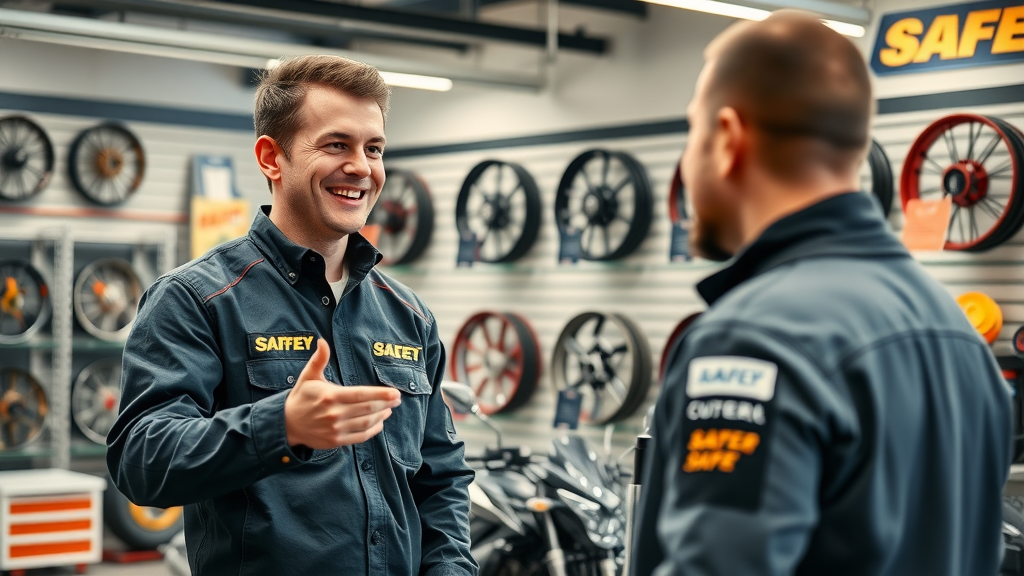
A trusted motorcycle shop is invaluable in your quest for a perfect custom build. Experienced technicians not only spot hidden risks but also guide you through the complex decisions involved in choosing custom parts, balancing wheels, and ensuring proper installation. The right shop employs certified mechanics familiar with everything from chrome motorcycle wheels to aftermarket exhaust systems.
Establishing a relationship with a reputable shop ensures you have access to expert evaluation after every major modification. Their thorough approach, including advanced diagnostic tools and hands-on experience with countless custom builds, can prevent common mistakes and help you achieve a unique, road-safe result.
Consulting with Experts: When and Why to Seek Help
Consulting with industry experts—whether at a specialized motorcycle shop or through respected online forums—can save you from expensive oversights and potential safety hazards. Professional guidance ensures that your custom motorcycle maintains its integrity over time and that each custom part integrates safely and efficiently. They can identify compatibility issues with rc components, guide you in proper installation practices, and help tailor modifications to your specific riding style.
While DIY spirit is commendable, it’s vital to know your limits. For complex jobs—such as chrome plating, major rim swaps, or integrating new custom exhaust systems—partnering with specialists prevents costly do-overs. A brief consultation before purchasing or installing aftermarket parts pays off in improved reliability and peace of mind.
Proper Installation Techniques for Motorcycle Wheels and Wheel Bearings
No custom build is complete without flawless installation . Professional motorcycle shops use precision tools to torque nuts and bolts to manufacturer specs, properly seat wheel bearings, and ensure immaculate wheel alignment. This meticulous attention to detail eliminates the risk of improper installation—one of the leading causes of poor ride quality and accident risk in custom motorcycles.
Learning from professionals—either by observing their process or requesting step-by-step documentation—can expand your own skills for future projects. Always verify torque settings with a reliable wrench, and never rush through critical steps like wheel bearing installation. Remember, investing in proper installation now saves time and money later.
-
Seek certifications and positive reviews when choosing a motorcycle shop
-
Ensure the shop uses advanced balancing machines and diagnostic tools
-
Look for technicians experienced with both Harley Davidson customs and modern sport bike modifications
People Also Ask: Avoiding Mistakes in Motorcycle Wheel Customizations
What is a possible effect of incorrect rear wheel alignment on a motorcycle?
-
A misaligned rear motorcycle wheel can cause unpredictable handling, increase both tire and chain wear, and potentially result in dangerous riding conditions. Correct alignment is vital for smooth turning and overall stability, especially following extensive custom modifications.
How much does it cost to have motorcycle wheels chromed?
-
Chroming motorcycle wheels typically costs between $250 and $500 per wheel. This price varies with wheel size, the quality of the chrome finish, and the expertise of the motorcycle shop performing the modification.
What might be a disadvantage of a spoke wheel?
-
Spoke wheels, though flexible and classic in appearance, require frequent maintenance and can lose tension over time. They often don’t offer the same rigidity or strength as cast wheels, especially in high-performance motorcycle modifications.
Do you need to rebalance a motorcycle wheel?
-
Yes, after any change—be it a tire replacement, repair, or custom wheel modification—you must rebalance your motorcycle wheel. Proper balancing ensures rider safety and smooth handling at all speeds.
Top 5 Pro Tips for Successful Motorcycle Wheel Customizations
-
Always verify wheel compatibility with your motorcycle model
-
Use high-quality custom parts and trusted motorcycle shops
-
Prioritize safety over appearance when choosing modifications
-
Perform test rides after any wheel or motorcycle modification
-
Schedule regular maintenance to catch post-customization issues early
Avoiding Common Mistakes in Related Motorcycle Modifications
Mistakes during wheel customizations often stem from interplay with other motorcycle modifications . Upgrading the exhaust system , swapping out motorcycle parts, or choosing new custom parts all interact in complex ways. Each change can affect clearance, center of gravity, and the way weight is distributed—especially critical when incorporating wider tires or heavier chrome wheels.
To sidestep issues, make modifications in a logical sequence and test thoroughly after each step. Validate each custom build addition—be it a custom exhaust pipe or lighting system—to preserve the balance and safety of your ride. Consulting with experienced mechanics or using dedicated fitment tools from RC Components can help you visualize and prevent compatibility issues before any custom part is installed.
How Exhaust System Choices Affect Wheel Customizations
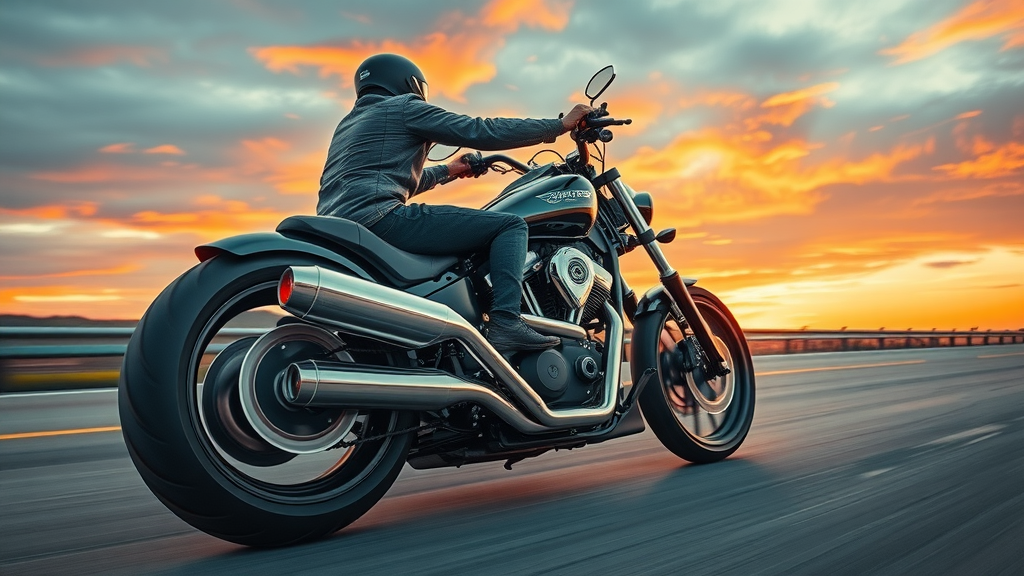
The exhaust system you choose can significantly affect the success of your motorcycle wheel modification. Upgrades like custom exhaust pipes may alter your bike's weight distribution or even interfere with larger wheels or wider tires—something especially important in complex custom motorcycle builds. Pay attention to exhaust pipe routing, clearance, and heat shielding so both exhaust and wheel modifications function harmoniously.
High-performance custom exhaust systems can also change the dynamics of acceleration and how weight shifts under power, impacting your need for sturdier wheels or specialized tires. Verify compatibility with both OEM and popular aftermarket parts before committing to a major rebuild.
Integrating New Motorcycle Modifications Without Compromising Safety
Ensuring each custom part integrates smoothly is critical for both performance and security. Adding multiple upgrades in a single session—such as new chrome moto wheels combined with upgraded brake pads and LED lighting system—requires careful planning to ensure no single part undermines the others. Review torque settings, clearances, and recommended installation order for each motorcycle part.
Riders should prioritize safety checks after each modification stage—not only via visual inspection but also through short, controlled test rides. Record observations, noise, or irregularities, and consult with your local motorcycle shop if anything feels off. Regular diagnostic assessments by professional technicians can catch conflicts between custom parts before they manifest as rideability issues or safety hazards.
|
|
|
OEM vs. Aftermarket Motorcycle Wheels in Custom Builds |
|
Aspect |
OEM Wheels |
Aftermarket Wheels |
|---|---|---|
|
Safety |
Tested for model-specific performance, standardized strength |
Varying quality—requires research for trusted brands/fitment |
|
Cost |
Generally more expensive, but long-lasting with warranty |
Wide price range; cheaper options may compromise quality |
|
Performance |
Optimal factory-tuned ride characteristics |
Opportunities for weight reduction, distinctive styling, but may require custom fitting and balancing |
Frequently Asked Questions on Motorcycle Wheel Customizations
-
What are legal considerations during custom motorcycle modifications?
All modifications must comply with local traffic and safety laws—such as limits on wheel size, reflectors, and exhaust noise. Consult legal guidelines or your state’s transportation department before altering major motorcycle parts. -
How do I know if my motorcycle wheel is properly installed?
A properly installed motorcycle wheel will rotate smoothly with no lateral wobble, unusual noises, or brake rub. Regular checkups and test rides help identify issues early. -
Why is proper wheel bearing installation crucial?
Properly installed wheel bearings ensure stable rotation, decrease friction, and protect against catastrophic wheel lock-up during riding—a top priority for rider safety and smooth performance.
Quotes from Custom Motorcycle Experts
"Customizing your motorcycle wheels is an art, but precision and attention to detail keep you safe on every ride." — Motorcycle Customization Industry Leader
Key Takeaways for Avoiding Mistakes in Motorcycle Wheel Customizations
-
Mistakes in motorcycle wheel customizations can lead to costly repairs and safety risks
-
Use professional guidance and avoid DIY traps on complex modifications
-
Quality parts and skills are key for successful, long-lasting motorcycle modifications
Essential Final Steps for Safe Motorcycle Wheel Customizations
-
Conduct a thorough post-installation inspection
-
Double-check wheel alignment and torque settings
-
Schedule a follow-up at your trusted motorcycle shop
Take Your Motorcycle Customization Up a Gear—Start Smart, Stay Safe
-
Ready to enhance your ride? Consult qualified professionals, invest in quality motorcycle wheels and modifications, and always prioritize safety when planning any custom motorcycle project.
An instructional video walkthrough demonstrating key mistakes to avoid when customizing your motorcycle wheels, including guidance from industry experts on proper wheel selections, installation, and balancing.
Take Action: Double-check every custom part, consult the experts at your local motorcycle shop, and ride confidently—your safety depends on it.
When customizing your motorcycle wheels, it’s crucial to avoid common mistakes that can compromise both performance and safety. The article “Common Mistakes to Avoid When Upgrading Motorcycle Wheels” from RC Components emphasizes the importance of ensuring compatibility between your motorcycle and the new wheels, selecting the correct size and fitment, considering the weight of the wheels, and prioritizing proper alignment. ( shoprccomponents.com ) Additionally, the piece “13 Custom Motorcycle Mistakes That Could Wreck Your Build” from My Car Makes Noise highlights errors such as poor planning, overlooking safety, and using incompatible or poor-quality parts. ( mycarmakesnoise.com ) By understanding and steering clear of these pitfalls, you can enhance your ride’s aesthetics while maintaining optimal performance and safety.
 Add Row
Add Row  Add
Add 

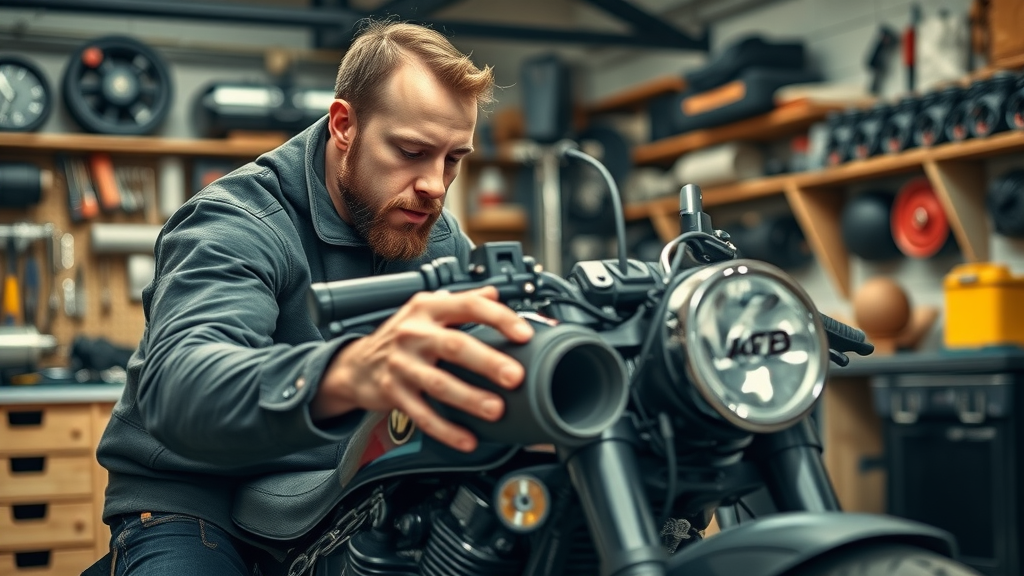
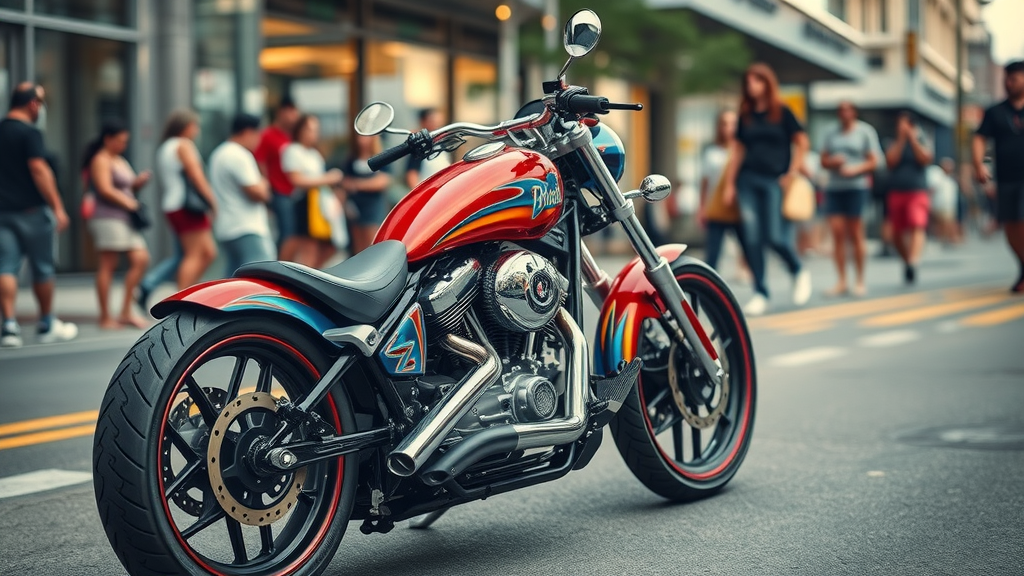
Write A Comment